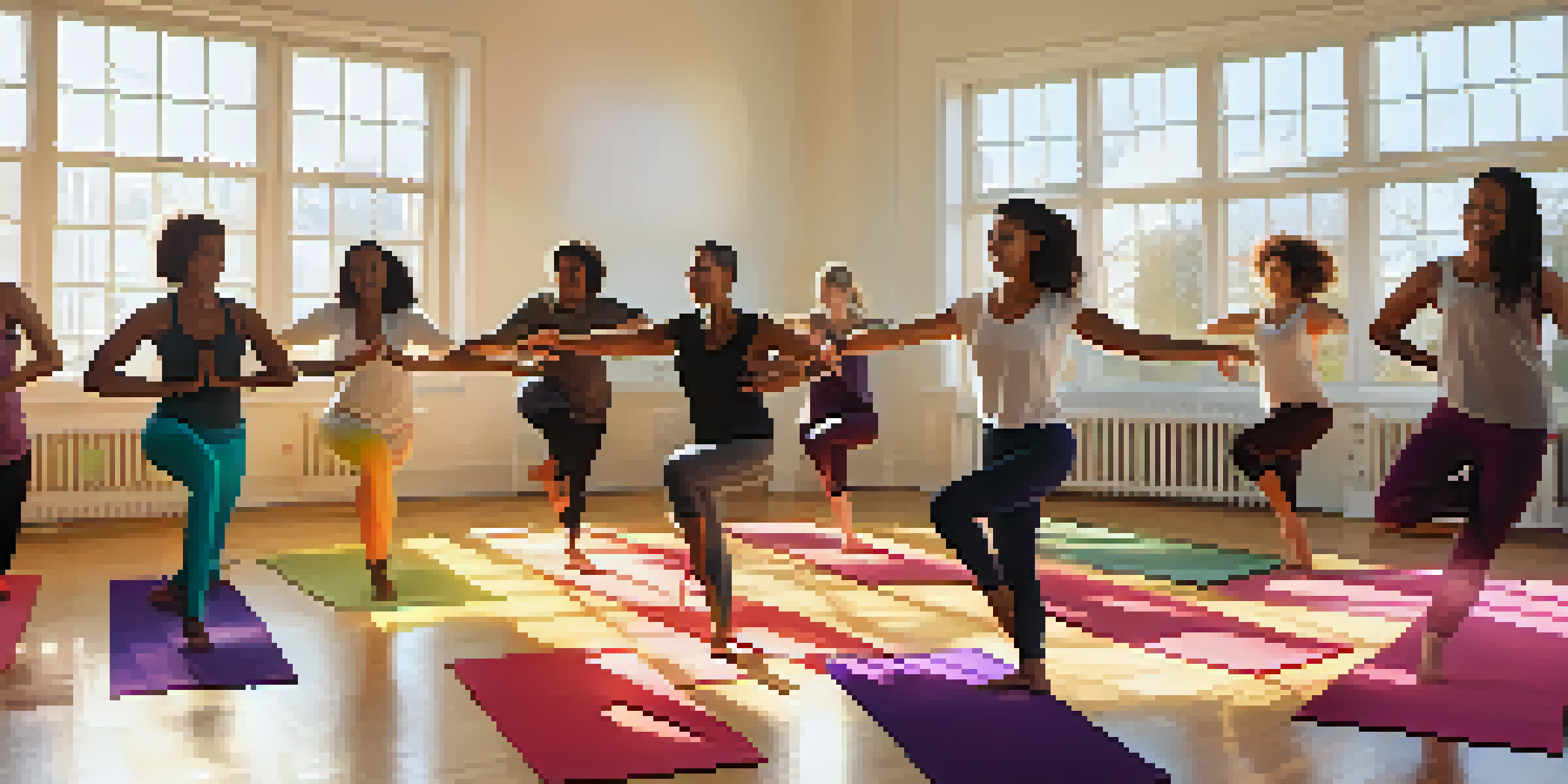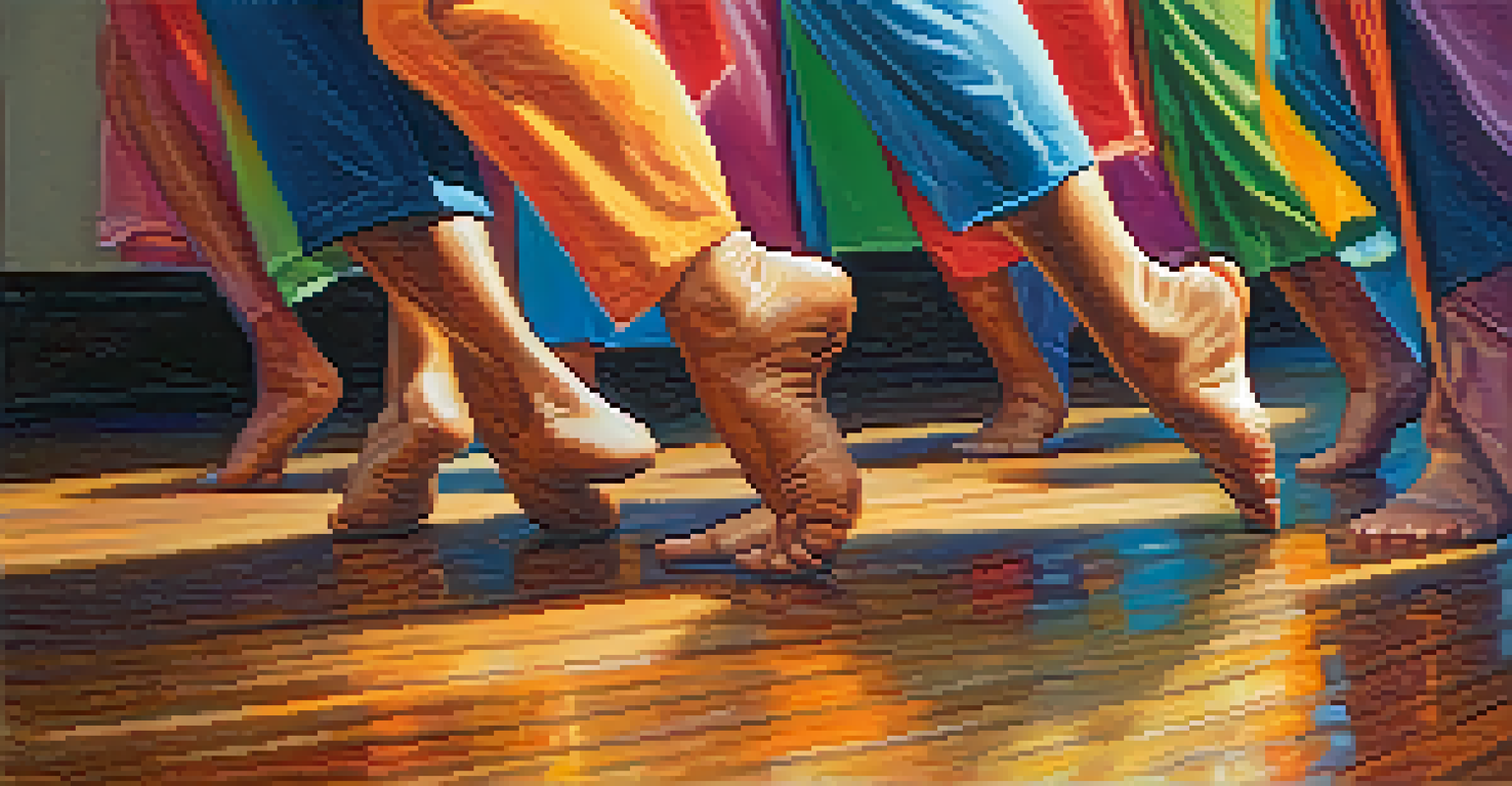Dance Therapy: A Journey Towards Self-Acceptance and Love

What is Dance Therapy and Its Benefits?
Dance therapy, or dance/movement therapy (DMT), combines movement with emotional expression. It uses the rhythms of dance to help individuals explore their feelings and release pent-up emotions. This form of therapy is especially beneficial for those who find it challenging to articulate their thoughts through words.
Dance is the hidden language of the soul.
By engaging in dance, participants can experience a sense of liberation, allowing them to connect more deeply with themselves. The benefits extend beyond just emotional release; dance therapy can also enhance physical coordination and boost self-esteem. It's a holistic approach that nurtures both the mind and body.
Through the process of moving freely, individuals often discover new ways to express themselves. This newfound freedom not only fosters creativity but also cultivates a deeper sense of self-acceptance. Participants learn that their bodies are instruments of expression, leading to a more positive self-image.
How Dance Therapy Promotes Self-Acceptance
Self-acceptance is about embracing who you are, flaws and all. Dance therapy encourages this by allowing individuals to express their true selves without judgment. When you dance, you’re not just moving your body; you’re telling your story through your movements.

The act of dancing can help break down barriers that inhibit self-acceptance. As participants engage with their bodies, they begin to appreciate their unique qualities and capabilities. This creates a nurturing environment where self-love can flourish, leading to profound personal insights.
Dance Therapy Enhances Self-Expression
Dance therapy combines movement and emotional expression, helping individuals explore feelings and boost self-acceptance.
Moreover, dance therapy often involves group settings, fostering a sense of community. Sharing the dance floor with others who are on similar journeys can be incredibly empowering. It reinforces the idea that everyone’s journey towards self-acceptance is valid and unique.
The Role of a Dance Therapist
A dance therapist is a trained professional who guides participants through the therapeutic process. They create a safe space for individuals to explore their emotions and facilitate movement exercises tailored to each person's needs. This personalized approach ensures that every participant feels supported.
The body says what words cannot.
These therapists are skilled in understanding body language and emotional cues, allowing them to help individuals navigate their feelings more effectively. They may use music, improvisation, and structured dance techniques to encourage expression. Through this guidance, participants can delve deeper into their inner selves.
The relationship between the therapist and participant is built on trust, which is essential for fostering self-acceptance. This supportive dynamic allows individuals to feel safe enough to explore and embrace their vulnerabilities through movement.
Dance Therapy Techniques for Self-Discovery
There are various techniques used in dance therapy that promote self-discovery. One popular approach is improvisational dance, where participants move spontaneously to music without a predetermined plan. This allows for genuine expression and can lead to unexpected insights about oneself.
Another technique involves mirroring, where participants mimic each other’s movements. This can help build empathy and connection, as well as provide an opportunity for self-reflection. Understanding how one’s movements affect others can illuminate personal feelings and relationships.
Techniques Foster Personal Insights
Methods like improvisational dance and mirroring encourage self-discovery and emotional understanding among participants.
Visualization exercises, where dancers imagine certain emotions or experiences while moving, are also common. This method encourages participants to explore deeper emotional layers, fostering a richer understanding of their personal narratives and paving the way for self-acceptance.
The Connection Between Movement and Emotion
The link between movement and emotion is profound. Our bodies often hold onto feelings that we may not consciously recognize, and dance therapy provides an outlet for these emotions to surface. As we move, we release tension and allow suppressed feelings to emerge, facilitating healing.
For instance, someone struggling with anxiety may find that certain dance movements help them channel their nervous energy into something positive. This physical manifestation of emotion can lead to a sense of relief and clarity. It's a reminder that movement can be a powerful tool for emotional regulation.
Furthermore, research supports the idea that physical activity, including dance, triggers the release of endorphins, often referred to as 'feel-good' hormones. This biochemical response can enhance mood and promote a sense of well-being, reinforcing the connection between our body and emotional health.
Real-Life Success Stories in Dance Therapy
Many individuals have experienced transformative journeys through dance therapy. For example, a young woman struggling with body image found solace in dance, leading her to embrace her uniqueness. Through guided sessions, she discovered the joy of movement and gradually shifted her perspective on self-worth.
Another inspiring story involves a man who used dance therapy to cope with grief. Initially hesitant, he found that expressing his sorrow through movement helped him process his emotions more effectively. Dance became a channel for his pain, ultimately paving the way for acceptance and healing.
Movement Aids Emotional Healing
Engaging in dance allows individuals to release pent-up emotions, promoting healing and overall emotional well-being.
These stories highlight the profound impact dance therapy can have on personal growth. As more individuals share their experiences, it becomes evident that embracing movement can be a powerful catalyst for self-acceptance and love.
Getting Started with Dance Therapy
If you're intrigued by the idea of dance therapy, getting started is easier than you might think. Many community centers, wellness studios, and therapists offer classes specifically designed for those interested in exploring this form of therapy. It's a welcoming environment for all, regardless of dance experience.
Before diving in, consider what you hope to achieve through dance therapy. Setting personal goals can help guide your journey and provide clarity on what you want to explore. Whether it’s improving your self-esteem or processing emotions, having a clear intention can enhance the experience.

Finally, remember that dance therapy is about self-exploration and enjoyment. Allow yourself to be open to the process, and don’t worry about how you look while dancing. The beauty of this therapy lies in the freedom of expression, so let your body move and your heart follow.